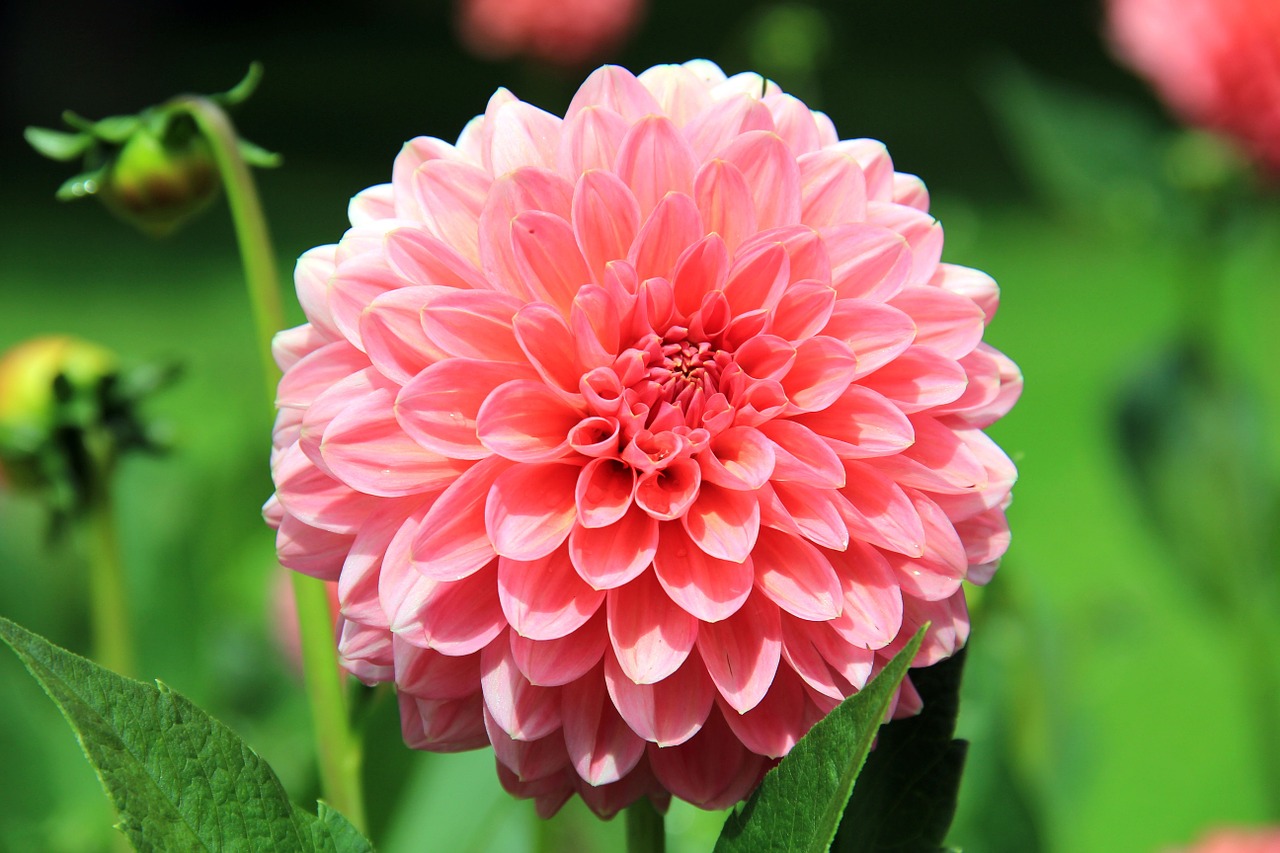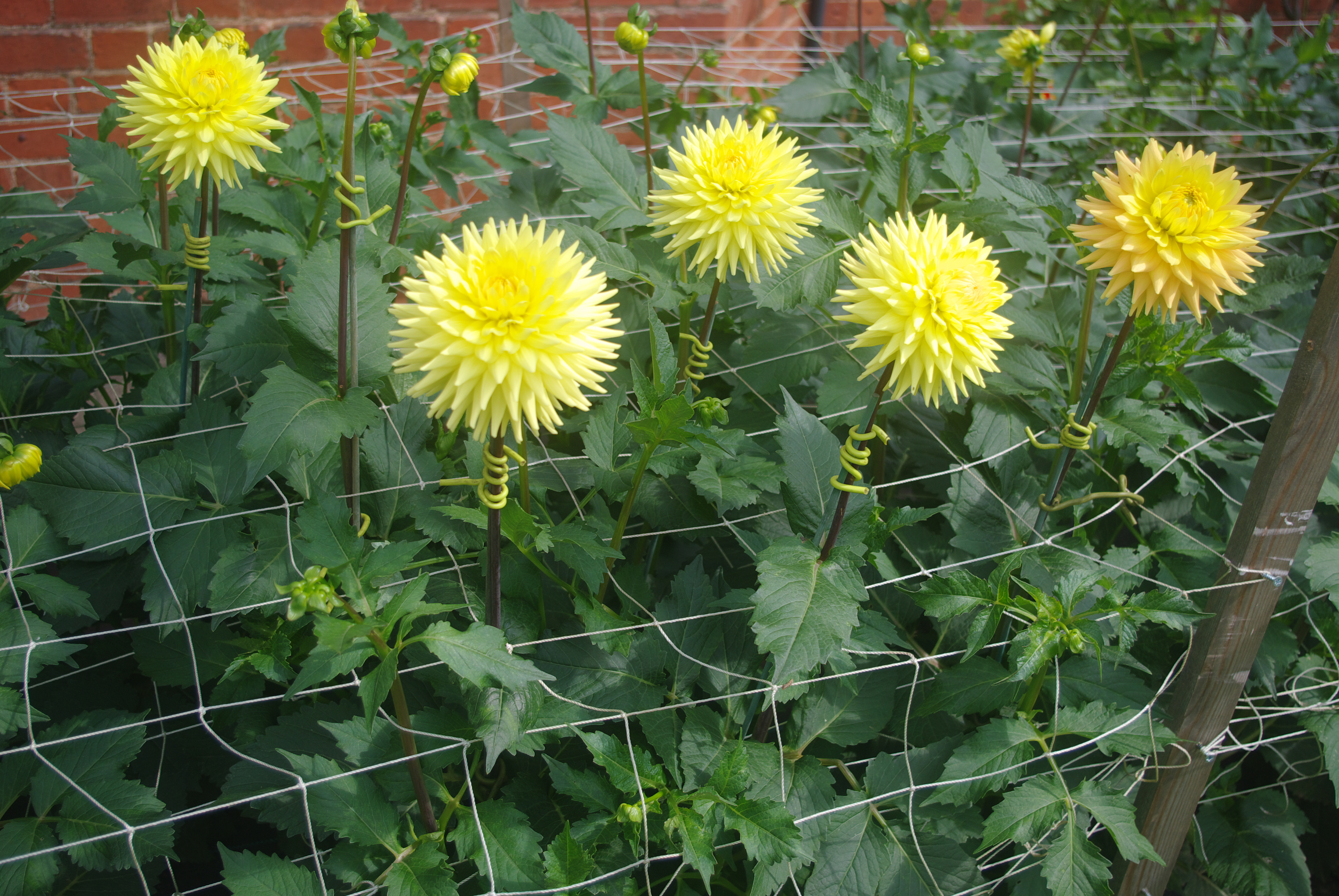Although Dahlias are thought of as border plants, they can fill a patio with late summer colour when grown in pots. There are many dwarf types, including Lilliput and the new Xl range with large double flowers on a short plant. You don’t need to restrict yourself to these as the border types will also grow well in 15-20lt pots if given a little care. With all the types I would recommend growing in a soil based compost (John Innes No3) to hold the moisture and add weight to prevent the pots falling on windy days. Here are my tips for success.
Lilliputs
These are the shortest of the bunch, usually with single flowers up to 5 cm across. They flower profusely and regular dead heading is best to keep them flowering all season. They will form a dome of flowers in pots as small as 5lt /7” and are stunning in groups. Best to pinch out the growing tips twice before leaving to flower. Several nurseries have collections of these and they are well worth a try. Varieties like Starwars can be found in tuber form in packets in early spring.


Lilliput dahlias Xl dahlias
Xl Dahlias
The Xl refers to the flower size in proportion to the plant. These are a modern strain that is starting to make an impact. Grown in 10-12” pots the flowers are up to 6”/15cm on plants around 45cm/18” in height. Remove the growing tip early June and then leave to flower. Mostly found as flowering plants in garden centres but varieties such as Go Go White and Fire Pot can be found in tuber form in packets in early spring.
Border Types.
Don’t dismiss the border types as this is where the variety of size and colour is. Plants grown in large pots 14” plus will give an equal display if grown in the same way and given some support. I suggest removing the growing tip leaving 3-4 pairs of leaves in early June. This will encourage the flowering shoots to develop from low down and keep the plant lower and more robust.
With all of these regular feeding with tomato food when buds start to form will really pay off. Once the frosts come, the pots can be allowed to dry and placed in a shed or cold green house to over winter. Even just moving them against a wall may do the trick.
Dave Gillam


